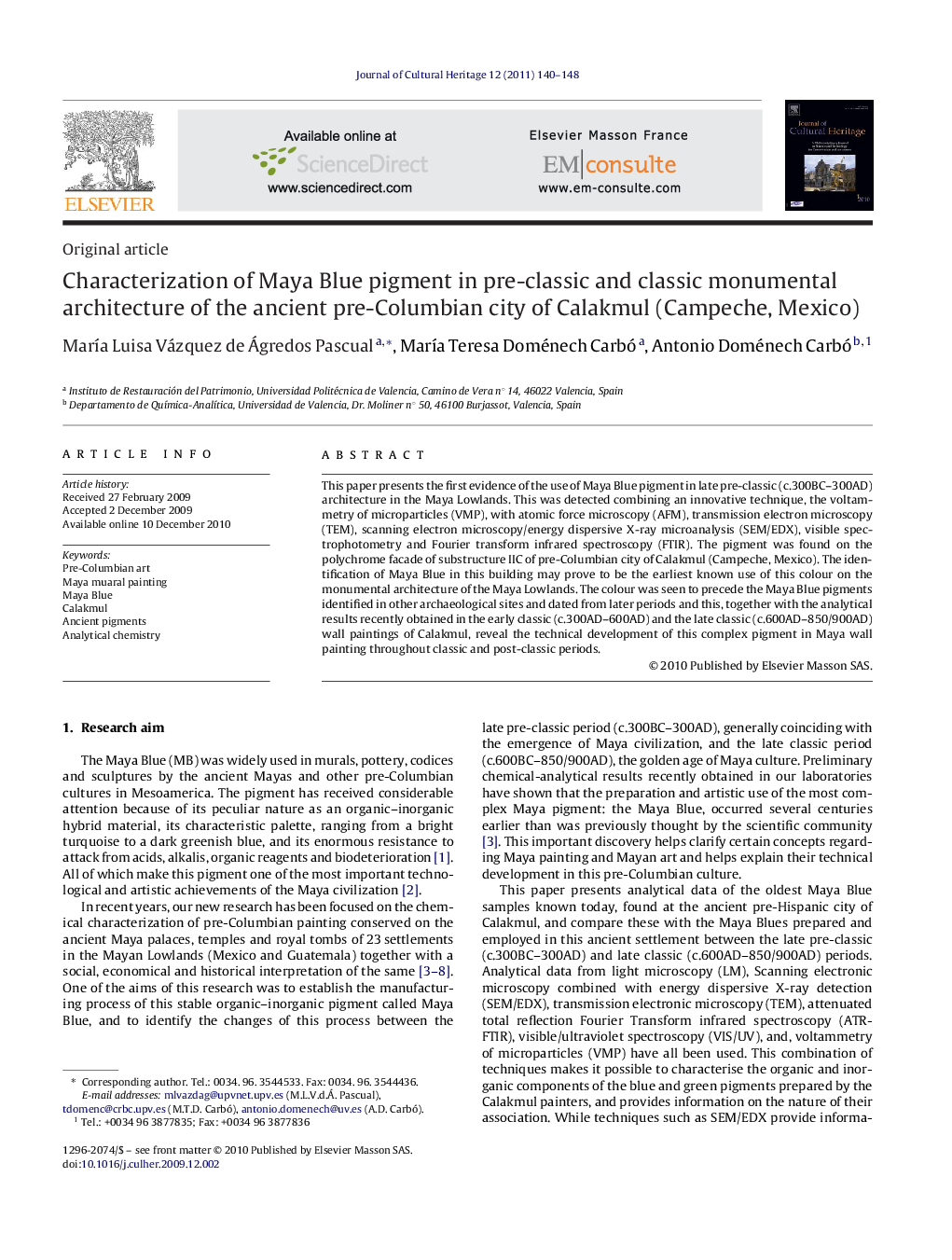| Article ID | Journal | Published Year | Pages | File Type |
|---|---|---|---|---|
| 1038386 | Journal of Cultural Heritage | 2011 | 9 Pages |
This paper presents the first evidence of the use of Maya Blue pigment in late pre-classic (c.300BC–300AD) architecture in the Maya Lowlands. This was detected combining an innovative technique, the voltammetry of microparticles (VMP), with atomic force microscopy (AFM), transmission electron microscopy (TEM), scanning electron microscopy/energy dispersive X-ray microanalysis (SEM/EDX), visible spectrophotometry and Fourier transform infrared spectroscopy (FTIR). The pigment was found on the polychrome facade of substructure IIC of pre-Columbian city of Calakmul (Campeche, Mexico). The identification of Maya Blue in this building may prove to be the earliest known use of this colour on the monumental architecture of the Maya Lowlands. The colour was seen to precede the Maya Blue pigments identified in other archaeological sites and dated from later periods and this, together with the analytical results recently obtained in the early classic (c.300AD–600AD) and the late classic (c.600AD–850/900AD) wall paintings of Calakmul, reveal the technical development of this complex pigment in Maya wall painting throughout classic and post-classic periods.
